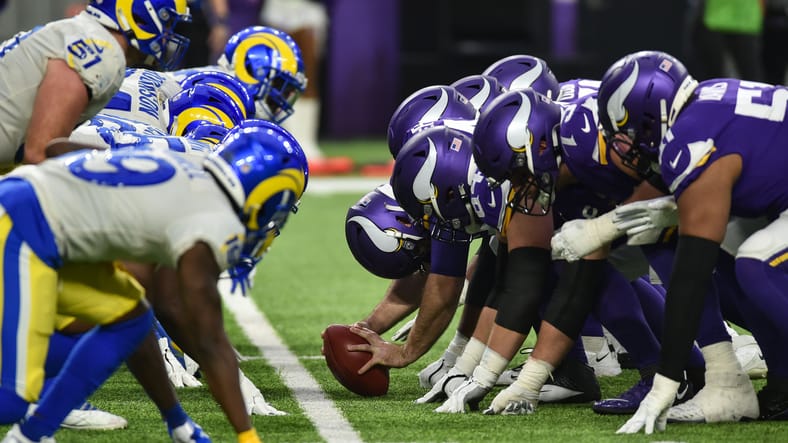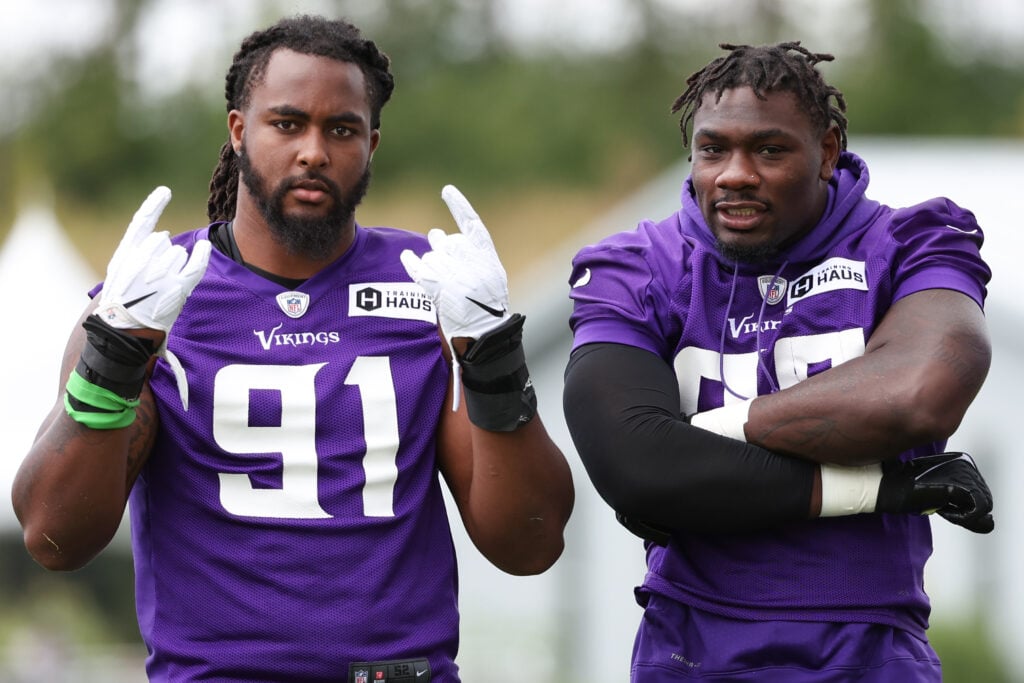The Vikings’ Struggles In The Red Zone

When I started to look for some stats, I confess that I had the perception of the Vikings being a bad red zone team. Much to my surprise, the team is 8th in scoring percentage and 11th in TD percentage. The Vikings can struggle to get there (18th in red zone drives), but, when they do, it often ends up in points. Kirk Cousins has a lot to say here, with only one interception in the last 20 yards this season. However, we saw the offense having a really hard time scoring TDs in some games, including the last one against the Rams.
The ones that easily come to mind are Week 3 against Seattle and last Sunday against the Rams. Both of them have something in common: Minnesota didn’t have Dalvin Cook. I know he doesn’t have a high number of TDs this season (only 6), and I’m not trying to bash Mattison (I really like him). But it’s undeniable that Cook is the better back and, when the field gets shorter, he produces better than Mattison. Opposing defenses also know this and can focus a little more on defending the pass in the red zone when the team is without #33, leaving shorter windows for Kirk and the WRs to operate.
Talking about WRs, that’s one other thing that hindered us through most of last week’s loss: Adam Thielen being out. When we’re talking about red zone, Thielen is, alongside Davante Adams, the best in the league. He has incredible route-running, concentration, and body control, which help him to be such a great guy to have near the end zone. As much as I love Justin Jefferson, he’s doesn’t have the same ability in the red zone, at least for now. If you also consider that all year the Vikings are playing without their TE1 in Irv Smith Jr., losing Thielen for the rest of the season gets even worse.

Purple PTSD: Is it Patrick Jones Time?
There’s one other thing that “helps” our struggles in the red zone, and his name is Klint Kubiak. He may end up being a good OC at some point, or even HC, but this season proved that hiring him was a mistake. Between bad play-calling and failure to adapt to games, he’s having a very shaky season. And I didn’t even mention his predictability. To show my point, let’s take a look at every red zone possession the Vikings had against the Rams.
The first trip to the red zone came after a 25-yard catch by Thielen to set up 1st & goal at the 8. Kubiak called two runs in a row, even after losing a yard on the first one. This lead to a long 3rd down pass that was intercepted.
The second trip was after Barr’s first interception, and, in the first play, Cousins was sacked for a loss of 7 yards. We then saw a short pass to JJ and a screen to Thielen (that’s when he suffered his season-ending injury). We only got to the red zone again after Barr’s second almost pick-six. This time, Mattison managed to score a touchdown.
The 4th red zone trip was also one that infuriated many fans, with the Vikings again not throwing a pass in the end zone despite being inside the 10-yard line. Our best drive all game was when we were in no-huddle mode. With Kirk calling the plays in the line of scrimmage, Osborn had a 6-yard catch to make it a one-possession game again.
The Vikings are an OK team at entering the red zone, and hardly ever make mistakes there. But the offense seems to lack the killer instinct to score touchdowns, settling with a field goal more times than it should. This comes down not only to play-calling but also execution and having the right people on the field.
[brid autoplay=”true” video=”933504″ player=”26281″ title=”Top%2010%20NFL%20QB%20Rankings%20Week%2017″ duration=”213″ description=”Updated weekly throughout the season, here are our top-10 NFL QB rankings.” uploaddate=”2021-12-30″ thumbnailurl=”https://cdn.brid.tv/live/partners/17660/snapshot/933425_s_1640896177910.jpg” contentUrl=”https://cdn.brid.tv/live/partners/17660/streaming/933425/933425.m3u8″]
